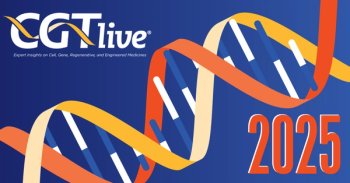
(P097) Tumor Density, Size, and Histology in the Outcome of Stereotactic Body Radiation Therapy for Early-Stage Non–Small-Cell Lung Cancer: A Single-Institution Experience
Our institutional experience confirmed that SBRT to primary NSCLC is well tolerated and provides excellent LC, regardless of tumor size or histology. Tumor density did not appear to have a significant effect on PTC, but denser tumors were more likely to have poorer outcomes, likely owing to associated larger tumor burden.
Jason C. Ye, MD, Jenghwa Chang, PhD, ZhiQiu Li, PhD, A. Gabriella Wernicke, MD, MSc, Dattatreyudu Nori, MD, Bhupesh Parashar, MD; Stich Radiation Oncology, Weill Cornell Medical College; Vantage Oncology
PURPOSE: Stereotactic body radiation therapy (SBRT) for early-stage non–small-cell lung cancer (NSCLC) has been shown to have excellent local control (LC). NSCLC has diverse sizes and histologies, which can affect treatment response. It also has variable densities, which may affect radiation dose accumulation within the target to therapeutic dose. This study represents a single-institution outcome of lung SBRT with respect to various factors.
METHODS: A retrospective chart review was conducted of all localized NSCLCs, with no lymph node metastasis or distant metastasis (DM), treated in 2001–2014. Patient and disease characteristics and treatment outcomes (eg, primary tumor control [PTC], intralobar recurrence–free survival [LRFS], disease-free survival [DFS], overall survival [OS], and toxicity) were examined. Further treatment planning details, including dose, fractionation, and gross tumor volume/internal target volume (GTV/ITV) densities, were obtained in the treatment planning system.
RESULTS: A total of 96 patients with 109 lesions who were treated had follow-up information available and were included. There were 42 (44%) men and 54 (56%) women, with a median age at time of diagnosis of 77 years (range: 52–95 yr). A total of 46% of patients had documented chronic obstructive pulmonary disease (COPD), and 66% had at least one prior malignancy (51% had prior NSCLC; range: 0–5). Further, 58% of patients could not undergo surgery due to pulmonary reserve, 17% could not undergo surgery due to other comorbidities, and 22% chose SBRT, even though they were deemed surgical candidates. A total of 80% of patients were stage IA, and median tumor size was 1.7 cm (range: 0.6–6.9 cm); 75% had adenocarcinoma (AC), and 17% had squamous cell carcinomas (SCC). The most commonly used dose and fractionation was 48 Gy in four fractions over 2 weeks (77%). There were seven (6%) grade 1 (four skin, two pain, one cough) and two (2%) grade 2 skin toxicities. With a median follow-up of 25 months, the 2-year OS was 84%, and DFS was 74%, while PTC was 91% (LRFS: 85%). Patients with AC and SCC had similar PTC (P = .939) and DFS rates (P = .909). Compared with stage IA, patients with stage IB disease had similar PTC (P = .462) but were more likely to develop DM (P = .003). The mean GTV/ITV density varied from 0.236–1.010 g/cm3 (mean: 0.697 g/cm3; standard deviation [SD] = 0.182). Density did not have a statistically significant effect on PTC, but those with denser GTV/ITV values (> 0.7 g/cm3) had inferior DFS (P = .027).
CONCLUSIONS: Our institutional experience confirmed that SBRT to primary NSCLC is well tolerated and provides excellent LC, regardless of tumor size or histology. Tumor density did not appear to have a significant effect on PTC, but denser tumors were more likely to have poorer outcomes, likely owing to associated larger tumor burden.
Proceedings of the 97th Annual Meeting of the American Radium Society -
Newsletter
Stay at the forefront of cutting-edge science with CGT—your direct line to expert insights, breakthrough data, and real-time coverage of the latest advancements in cell and gene therapy.




